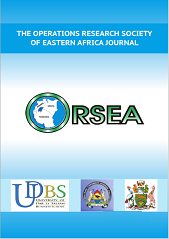Synergizing Resource Leveraging and Innovativeness for Enhanced SME Performance: Evidence from Tanzania’s Agro-Processing Sector
Abstract
This study examines the interplay of resource leveraging and innovativeness on the performance of Small and Medium-sized Enterprises (SMEs) in the agro-processing industry in Tanzania. Data were gathered from 254 SMEs operating in the agro-processing sector in Dar es Salaam, Tanzania, and used Structural Equation Modeling (Partial Least Squares SEM) with the SEMinR package for
data analysis. Findings show that innovativeness have a significant impact on SME performance under partial mediation of resource leveraging. furthermore, Resource leveraging (RL) emerges as a pivotal factor for SME success, whereas the impact of innovativeness (IN) on performance is less pronounced. These outcomes underscore the need for business strategies that optimize resource use and embrace an innovative approach to market opportunities, especially given the distinct challenges faced by SMEs in Tanzania’s competitive agro-processing sector. Research was limited as the sample was confined to a specific region and industry in Tanzania, potentially limiting the generalizability of the findings to other contexts. Additionally, relying on self-reported data introduces potential bias, and measuring constructs like innovativeness may not fully capture their multifaceted nature. However, This study provides practical implications for agro-processing SMEs looking to achieve SME performance and competitiveness,
contributing to both RBT and DCT.
Keywords: SMEs, Agro-processing Industry, Resources based view theory, Dynamic capability theory, Innovativeness, Resource leveraging and Performance






